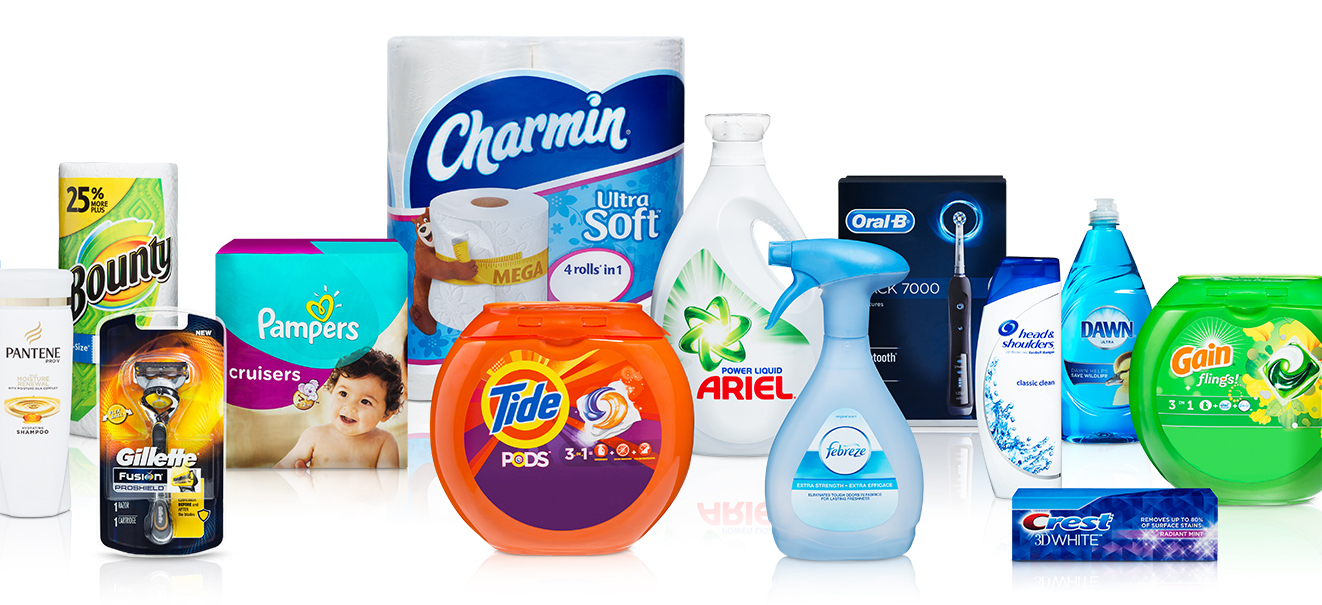It’s been described as Procter & Gamble’s biggest
construction project ever, and dozens of electricians represented by
Cumberland, Md., Local 307 are working diligently to make the half-a-billion-dollar
manufacturing facility a reality.

|
|
Procter & Gamble manufactures a variety of personal and household cleaning products, many of which it plans to make at its massive new plant in West Virginia.
|
When the Cincinnati-based conglomerate broke ground in 2015 on the facility at the Tabler Station Business Park in Inwood, W.Va., a few miles south of Martinsburg, it had been planning to build a fairly modest plant that employed about 700 workers making a variety of personal grooming and household cleaning projects.
But earlier this year, P&G announced that it was doubling down, committing $500 million toward a manufacturing campus on a sprawling site roughly half the size of New York City’s Central Park.
“The project site is so massive, it’s hard to visualize,” said Local 307 Business Manager Rodney Rice. It’s also not easy to tour on foot, he said. “You need to get someone to drive you around.”
Local 307’s jurisdiction extends across Western Maryland’s three counties plus the Mountain State’s eastern panhandle. Rice said that the P&G project has given the local a welcome shot in the arm after jobs dried up at the Wesvaco paper mill in Luke, Md., and at West Virginia’s Mount Storm coal-fired power station.
“For now, we’re doing the house power, utility power, product lines, fire alarms and building security,” he said, noting that most of Local 307’s electricians at P&G for this project are coming from IBEW signatory contractors Lighthouse Electric and Freestate Electric.
Managing construction for P&G is Fluor Corporation, which plans to employ dozens of local contractors and more than 1,000 local craft and trade workers over the course of the multi-year construction job. “Just about every trade is represented on this project,” Rice said.
Local 307’s members have figured prominently among the men and women who have been hired at Inwood, a fact that’s all the more impressive considering West Virginia is a right-to-work state, one of 28 where non-union free riders legally have access to all of the advantages of union membership, such as grievance representation or collectively bargained pay, benefits and working conditions, without having to pay dues to finance the work required to protect and strengthen such hard-won benefits.
The project has even helped attract new IBEW members. “We’ve been fairly successful with organizing,” Rice said, “with our campaigns focusing on the majority of the Martinsburg-Hagerstown area.”
Another challenge of working on a project in West Virginia, Rice said, is that the state fire marshal’s office requires electricians to hold a separate electrical license in addition to any other licenses they might already hold. This added prerequisite “has kind of helped us,” he said, because it puts the local in a good position to assist staffing agencies quickly finding workers who hold the required West Virginia certification.
“We also rotate our apprentices because we want them to be able to do just about everything,” the business manager said. “That way, companies get well-versed workers.” Rice noted that all of Local 307’s apprentices are required to take IBEW Code of Excellence classes, as well.
“We’ve done a pile of training,” he said, adding with pride that, during the recent District 4 progress meeting, his local received an award for its training efforts.
The availability of quality workers in the area was in fact a key driver in P&G’s decision to build the plant in Inwood, company facility engineer Tony Wagner told the Martinsburg Journal.
“Our shampoos are all made in an Iowa City plant and Dawn is made in Kansas City,” Wagner said. “But 80 percent of our consumers are along the eastern seaboard.” The company hopes that the Inwood facility will help it get products to customers more quickly and efficiently, aided also by its proximity to rail lines and major interstates.
Built in sections, P&G’s Tabler Station site will eventually consist of nine production modules under a single roof big enough to cover nearly 45 football fields.
“This is the biggest project P&G has ever done globally,” Wagner said. “This is a unique project where we have multiple buildings going up at the same time, ultimately culminating with massive production.”
In 1837, William Procter and James Gamble started their soap- and candle-making business in Cincinnati. According to the company’s website, P&G has expanded over the last 181 years through a series of innovations and acquisitions to become a dominant purveyor of a wide variety of household cleaning, health and personal grooming products under dozens of brand names, with a net annual income of more than $10 billion.
Company officials recently announced that construction work in Inwood is on track for completion by next spring.
“All of the buildings are basically done now,” Rice said. “Next comes installing more equipment and getting it all up and running.”
The first completed module at the site began producing test runs of Bounce brand fabric softening dryer sheets back in February; by July, sellable versions were being manufactured and shipped from Inwood to a number of distribution centers across the United States.
Later this fall, the company hopes to move toward production of a variety of body washes, shampoos, and conditioners, followed by dish and laundry soaps early next year and eventually its Swiffer line of cleaning products by the end of 2019.
When the site is fully up and running, up to 2,000 people are expected to find work at the Inwood site, which included product-packaging companies Technimark and Logoplaste to help P&G provide a near-seamless line extending from manufacturing to packaging to shipping.
“Our goal is to end up getting the maintenance work once construction is done,” Rice said. “As long as we can provide top-of-the-line electricians, we’ll probably keep getting work there for a long time.”